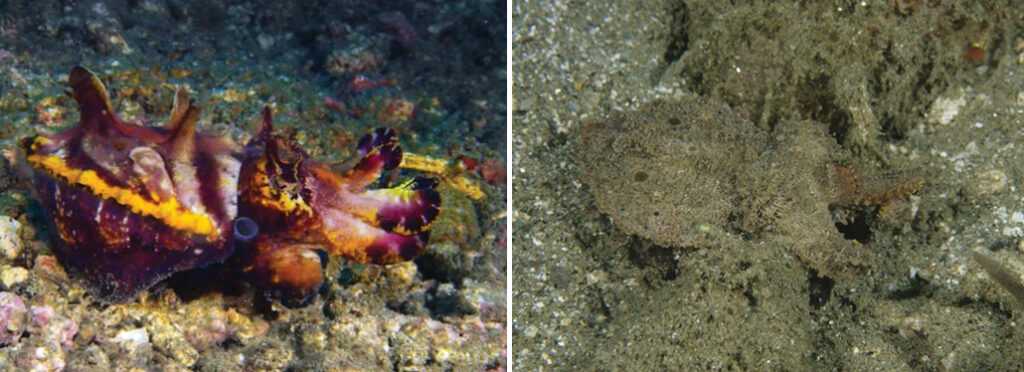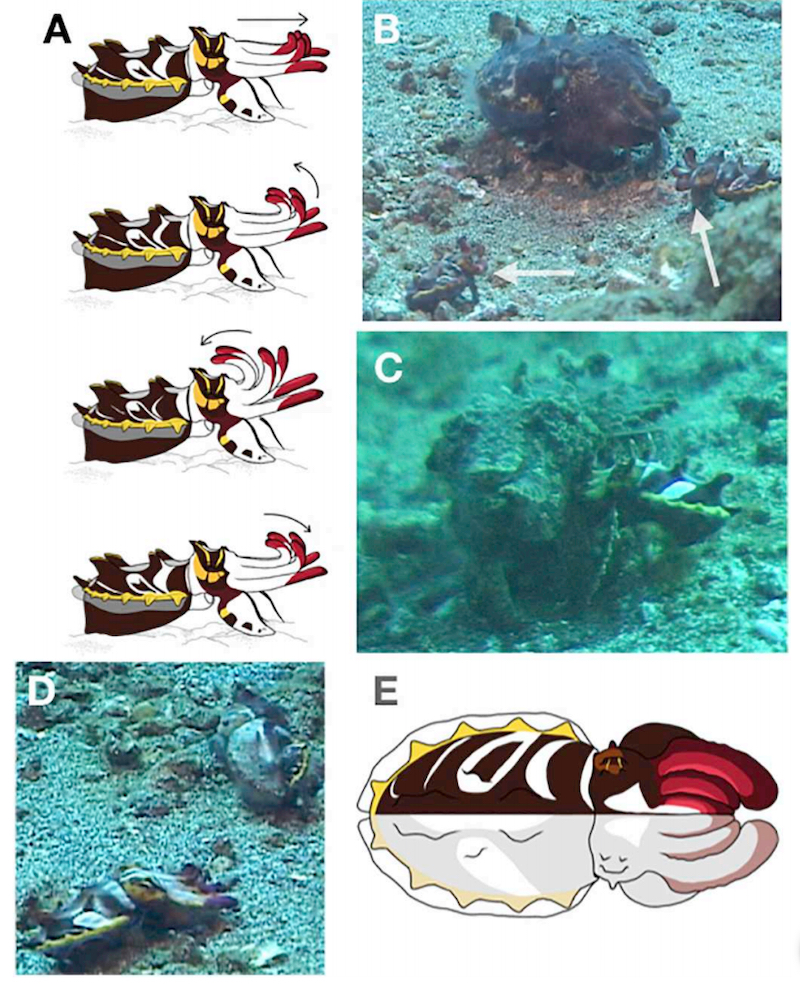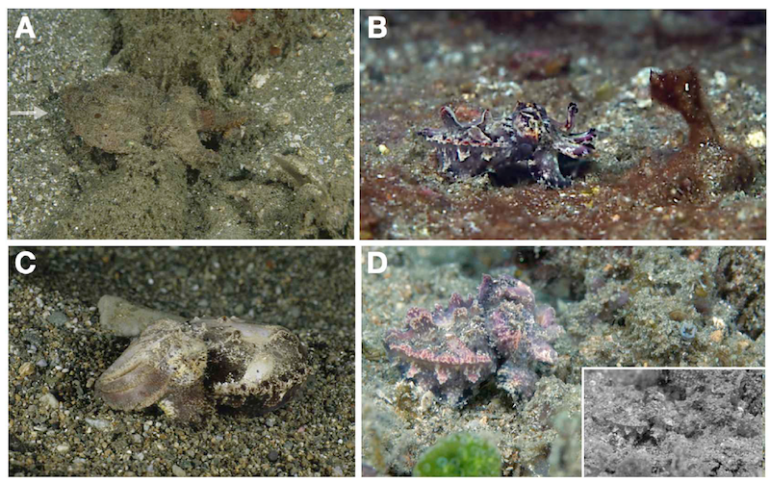Lookup any pictures of the iconic Flamboyant cuttlefish (Metasepia pfefferi) and you’re sure to see it’s flashing bright purple and yellow hues. However, a recent study proves their colorful patterns are only a display, and they spend most of their time looking brown and bland, preferring to blend in with the sand.
“These animals have superb camouflage,” says Roger Hanlon, a marine biologist at the Marine Biological Laboratory in Woods Hole, Mass. Specialized cells and structures in their skin allow the animals to instantly morph into ostentatious patterns, as well as blend in.
Last year Dr. Roger Hanlon visited the Lembeh Resort in North Sulawesi, to see how these animals balanced flamboyance with camo in nature. Video footage collected by the team reveals details of the species’ mating practices and defensive behaviors as well as what the animals do in their downtime.
Hanlon and Gwendolyn McManus describe the results in the August Journal of Experimental Marine Biology and Ecology.

The solitary species slowly ambles along the seafloor, foraging in a drab region of mud and sand between coral reefs. “It’s like a moonscape or a desert,” says Hanlon. Flamboyant cuttlefish take on the color and texture of their muddy seafloor backdrop and masquerade as a lump of sand or a rock.
Like some other cephalopods, these cuttlefish spend most of their time incognito, reserving their displays for special occasions: confusing a predator, courting a mate and sparring with rival suitors.
Males also show flamboyant displays to attract the ladies. After spotting a female in the distance, a male will flaunt bright colors and undulate their mantle stripes in a move called “the passing cloud.”
Researchers also observed two types of gestures during this colorful routine: arm waving (reminiscent of a human bowing) and kissing (a tap on the female’s arm with his arms). “These displays are really elaborate and dynamic,” says Hanlon. “And they’re comparable to what some of the most sophisticated birds do and even some primates.”

show the dynamic “waving” behavior and C shows the “kissing” behavior (see
text). D and E show unilateral signaling during aggressive fights. (Images B-D
are frame grabs from video; drawings A and E by coauthor Gwendolyn
McManus are based on video).
The field observations fill in knowledge gaps about how these animals survive in the wild and contradict two previous studies in a lab and an aquarium, as well as photos and videos from scuba divers, that suggested that the animals displayed their flamboyant patterns more frequently. Scuba divers with bright lights and higher density tanks may have shifted the behavior of a species that spends most of its time alone and under the radar. [Science News]



